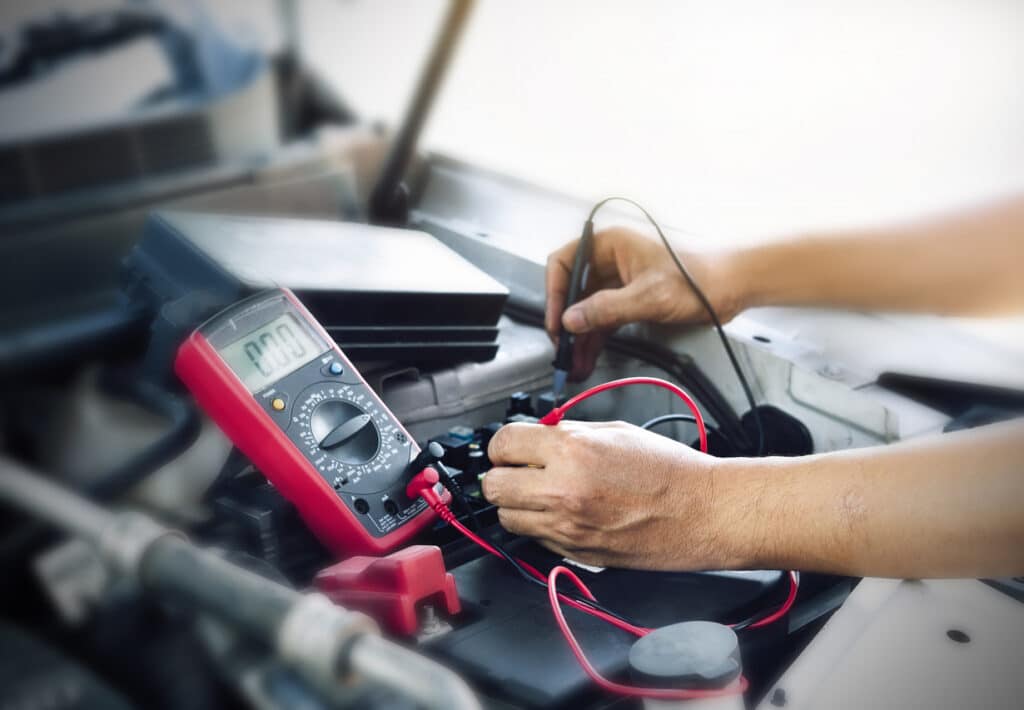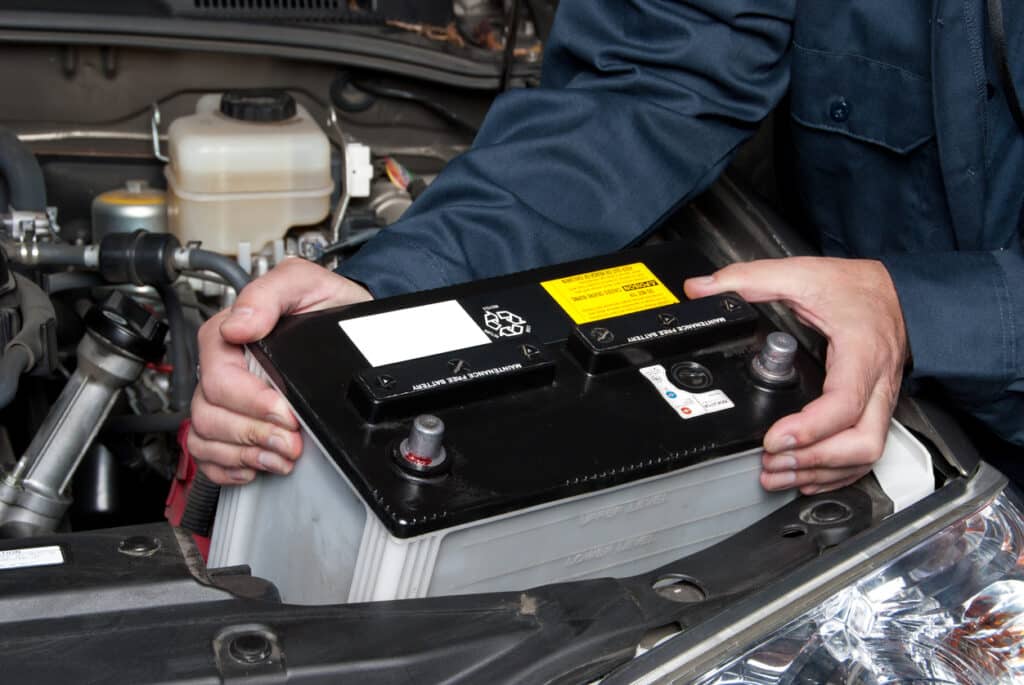Battery problems account for a high proportion of vehicle breakdowns and there are few things more demoralising than turning the ignition to find a non-starting engine. But what are the main causes of car battery draining problems? And how exactly can you prevent them?
Read more: Why is My Car Battery Draining So Quickly?Here, we’re looking at some of the main reasons why your car’s battery may be running flat, along with some easy tips on how to it juiced up and running as it should.
Why Does My Car’s Battery Drain So Fast?
Car batteries, particularly on older makes and models, are prone to draining their power at a faster rate than brand-new units. But if it seems like your car’s battery is always low on power, there could be some underlying causes and problems that you need to address.
Let’s take a closer look at some of the key causes of rapid car battery draining.
Parasitic Battery Draining
This sounds a lot more dramatic than it actually is. Essentially, parasitic draining happens when an electrical accessory or component doesn’t switch off properly with the ignition, meaning that it continues to drain the battery when parked.
Note that parasitic battery drain is different to operator-related error (i.e., leaving your sidelights on). It’s a mechanical fault that may need to be diagnosed and repaired by a professional mechanic using a dedicated electronic control unit (ECU) diagnostic tool.
Any faulty electrical component can cause parasitic car battery drain, but some of the most common are interior lights, alarms, glovebox lights or malfunctioning computer modules.

Lots of Short Trips with No Longer Runs
Quick trips around town may be convenient for you but they can spell bad news for your car. Without a longer, faster run to fully recharge the battery, frequent slower drives can take their toll, ebbing away your car’s power until you’re running on the bare minimum of charge each time you switch on the ignition.
Of course, the easiest way to prevent this is to make for a faster road like the motorway and get your car up to speed. But often this isn’t convenient or efficient and could result in unnecessary fuel use and mileage.
Another solution is to charge your battery at home every so often using a car battery charger. Sure, this does require some confidence and know-how beneath the bonnet, but with lots of model-specific guides out there, detaching and charging a car battery should be a piece of cake for most DIY’ers.
Poor Battery Health and Condition
Car batteries need replacing periodically to ensure maximum efficiency and faultless performance. If you haven’t checked the condition of your battery recently, this could explain why you’re experiencing frequent and rapid power draining.
Some of the tell-tale signs that your car’s battery is in a poor state of health include…
- Loose connections: Are the cables leading to the battery wobbly or not seated correctly? A loose connection could well be the cause of your low-charge problems.
- Corroded terminals: Rust, debris and corrosion on the metal battery terminals can lead to connection issues, meaning that the battery may not be charging correctly. This is a common problem on older batteries that have been exposed to lots of day-to-day moisture, wear, and tear.
- Dirt, grease, and dust: Batteries are relatively sensitive components that can develop faults at the slightest of issues – including the presence of dirt, dust, and debris. It may be that disconnecting the terminals and giving the battery a clean with a soft-bristled brush could solve your charging problems.

Faulty Alternator
The moment you switch on your car’s ignition and put it in gear, the alternator kicks in and sends power to the battery, charging it whilst powering electrical accessories. But what happens when the alternator develops a fault and stops sending power to the battery?
In the case of a faulty or defective alternator, your battery won’t ever reach full charge, meaning it will gradually drain over time. The symptoms of a faulty alternator include flickering lights and other unexpected electrical problems, including slow-to-operate electric windows and wipers.
You can diagnose a faulty alternator by charging the battery to its maximum before making a longer, faster trip. If the battery is drained, this shows that the alternator hasn’t been sending adequate power to the unit and may need to be repaired.
Extreme Temperatures
Car batteries require optimal conditions to charge and retain power at the required rate. The chemical processes and reactions within a battery simply don’t happen as efficiently in very hot or very cold weather, which can cause them to drain more quickly or fail to charge.
There are minimal ways to prevent this type of climate-related issue, but ensuring that your battery is in the best possible condition is a good place to start. If your battery is old and prone to draining, it’s best to replace it ahead of the summer or winter months when extreme conditions could cause problems.

Old and Tired Battery
Car batteries aren’t designed to work indefinitely, so there will come a time when you have to bite the bullet and have yours replaced. Indeed, based on average mileage (12,000 per annum) you should only expect a battery to last around five years, after which time you may start experiencing some of the problems we’ve outlined above.
The good news is that replacing a car battery isn’t an overly expensive or complicated undertaking; it’s definitely something the average DIY’er should be able to handle. Alternatively, a mechanic may suggest replacing the battery for you as part of your car’s annual service.
Need help deciding if your car’s battery is on its last legs and ready for a replacement? Be sure to read our essential battery health check guide.
We hope this guide helps you to diagnose your car battery problems and decide on the best route forward. Whatever the problem, Holts is here to help with our effective DIY car maintenance range.



